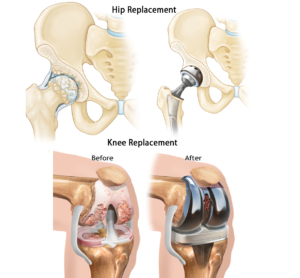Joint Replacement

What is the role of navigation or computer assisted surgery in joint replacement?
Computer assisted joint replacement is supposed to increase the precision of the surgery but the single most important factor still remains the expertise of the surgeon and his or her experience.
What is the correct age of joint replacement?
Joint replacement is the surgery to uplift the quality if life and to restore painless and stable movement. It should be done whenever it is needed. One must understand that painless and stable movement is needed most for a person to continue his social, professional & personal life. Joint replacement are done on as young as 25 years and as old as 85 years. Mostly people who undergo joint replacement at young ages are people who have some kind of genetic arthritis like ankylosing, spondylitis, juvenile rheumatoid arthritis.
How long does joint replacement last?
Joint replacement last ranging from 20 to 25 years. In case of knee it is generally a cemented implant and in hip it can be both cemented and uncemented. Uncemented implants may last longer than cemented implants. Another thing that must be understood that longevity of any implant is technic dependent, precision dependent and hence the perfection of the surgery is of paramount importance.
Which is the best implant for knee replacement?
Whilst all implant that are used are of international quality. With follow-up and survivorship data there is probably nothing called best implant. ONE must understand that the performance of the implant and survivorship are much technique dependent and expertise of the surgeon.
CONTACT US FOR YOUR MEDICAL TREATMENT
CALL OR WHATSAPP AT +91 81006 28482
CONTACT – HEAL IN INDIA
EMAIL: ANIRBAN@HEALININDIA.COM

